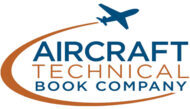General Aircraft Types
Do you think Wilbur and Orville Wright ever dreamed that their successful aircraft demonstration would lead to such literal heights in the future? Due to their perseverance and ingenuity, we now have a plethora of planes at our disposal.
Thankfully, we have the luxury of pressurized cabins, in-flight entertainment, and even meals when flying sky-high for business or pleasure. But what are the different aircraft types available today, and how are they regulated?
How the Federal Aviation Administrations Keeps Flying Safe
Federal Aviation Administration (FAA) Standards ensure that the development, maintenance, and certification of all airspace equipment meets certain criteria. This includes not just the aircraft, but the airports, the machinery that maintains them, and all staff who operate within the airspace. The FAA Standards also extend to procedures relating to servicing and flying aircraft. This means FAA training applies to people such as pilots, air traffic controllers, and aviation mechanics. They all need to prove they have the skills and knowledge to keep this mode of transportation as safe as possible.
Types of Aircraft
The FAA groups similar aircraft together, comparing elements such as their power source, propulsion mechanics, in-flight handling, and landing gear. The general aircraft types are as follows:
- Airplane (single- or multi-engine)
- Rotorcraft (helicopter)
- Lighter-than-Air (balloon or blimp)
- Powered Parachutes (powered aircraft with flexible wings and wheels)
- Weight-Shift-Control (hang glider)
The categories can be simplified further into lighter-than-air and heavier-than-air.
Lighter-Than-Air
This type of aircraft uses buoyancy to float or glide through the air. They use sails of some sort to manipulate the air, and may also employ the use of helium or hydrogen to boost buoyancy.
Heavier-Than-Air
These crafts use lift and thrust to stay in flight and may have fixed wings or flexible wings to do create both.
Common Airplanes Flying Today
Aircraft have come a long way since 1903 when the Wright brothers took flight in Kitty Hawk, North Carolina. Now we have commercial airplanes, private jets, and private propeller planes flying the skies.
Types of Commercial Aircraft
- Jumbo Passenger jets
- Mid-Size Passenger Jets
- Light Passenger Jets
- Passenger Turbo Props
- Cargo Planes
Types of Private Jets
- Very Light Jets
- Light Business Jets
- Mid-Size BusinesJets
- Heavy Business Jets
- Military Jets
Private propeller Planes
- Single engine
- Twin Turboprops
- Aerobatic
- Amphibious (water plane)
- Military
Let’s take a look at some of the most common types of planes in the sky today.
Piston Plane
These little propeller planes can usually seat up to six people, and their flying altitude tops at 15,000 feet.
Turboprop
Like piston planes, prop planes have propellers, which are powered by one or more gas engines. They typically have good fuel economy, making them an economical choice. Turboprops can fly at an altitude of 35,000 feet, and some can carry up to 80 passengers.
Private Jets
Also known as very light jets (VLJ), a private jet can carry up to eight passengers. Private jets are ideal for short flights, not only due to their fuel capacity but the lack of bathroom amenities onboard.
Light Passenger Jets
They are cost-effective like turboprop aircraft, but have a few extras, including onboard bathrooms. Light jets can seat up to 100, and they’re a great investment for economy or budget airlines.
Heavy Business Jet
You can seat up to 18 passengers in this jet, hold your next conference meeting above the clouds.
Mid-Size Passenger Jets
Also known as Narrow Body Aircraft, these can carry up to 350 passengers. They’re popular with airlines because of their cost-efficiency and accessibility at the gate.
Jumbo Passenger Jets
These wide-body aircraft are known for carrying passengers around the globe. Jumbo jets can also be used exclusively for transporting cargo as well. A popular example is the Boeing 747, or the Airbus. A drawback of a Jumbo Jet is that it needs access to large hubs for take-off and landing. Not all airports can accommodate their size.
Licensing and Certification for Aircraft
Different types of aircraft require different licensing or certifications so pilots meet the necessary FAA standards. Some limitations on a license could include only being allowed to fly alone, only being permitted daytime flights, or only operating aircraft of a certain size.
In addition to pilots and mechanics being certified, the aircraft themselves must pass some tests in order to fly. Much like when building a house, the plans for building an aircraft must be approved and issued a Type Certificate (TC). Any changes made to the plans must once again go through an approval process; otherwise, the plane needs to be built according to the original specifications.
After an aircraft has been manufactured, the resulting prototype is tested so it can earn an Airworthiness Certificate. Both commercial and passenger planes need this certificate issued from the country’s national aviation authority.
According to the FAA, the owner of the aircraft must apply for these certificates, and a group of 1,300 “engineers, scientists, inspectors, test pilots, and other[s]…” will see the project through to completion. Such attention to detail, regardless of the aircraft type, is one of the reasons flying is such a safe form of travel today.
